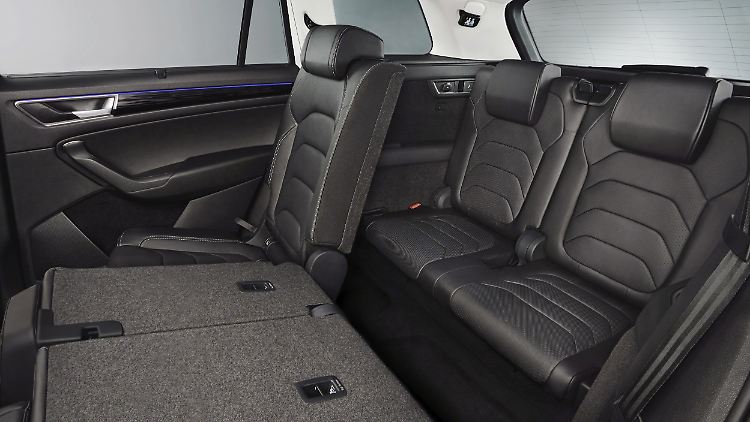Used car check
Skoda Kodiaq – top even after many kilometers
This audio version was artificially generated. More info | Send feedback
Skoda has achieved a major success with the Kodiaq in 2017. Now the model is being launched in a new edition. This makes the first generation mid-range SUV more attractive in terms of price. A used car test clarifies what it has to offer and where it has problems.
The second generation of the Skoda Kodiaq is in the starting blocks, a good opportunity to take a look at the qualities of the first generation (2017 to 2024) in the TÜV main inspections (HU).
Quality


With a 4.70 meter body, the Kodiaq is one of the most spacious representatives of its genre.
Kodiaq owners don't have to worry about the MOT. Its defect rate is below the average of the other vehicles tested – despite higher mileage. Now and again, the inspectors complain about oil leaks. When examining the brake system, however, the brake discs are noticeably worn. They cannot cope with the high weight of the Kodiaq. The newer models have defects in the axle suspension, but older ones have no problems with this.
Body and interior


The interior of the Kodiaq is typical of Skoda, more functional than playful.
The mid-range SUV, named after a species of brown bear in Alaska, is 4.70 meters long and is 20 centimeters longer than its close relative, the VW Tiguan. This puts the Czech car on a par with the long version of the Tiguan known as the Allspace. There is plenty of space. However, those using seats six and seven in the seven-seater version have to limit their range of movement. The rear seat, which is split 60:40, can be moved lengthways by 18 centimeters to create more knee room or trunk space.
In the five-seater configuration, the luggage compartment holds between 720 and up to 2065 liters, and the folding passenger seat allows objects up to 2.80 meters long to be transported. In the seven-seater, the cargo compartment shrinks to 270 liters when all seats are occupied.


The scope for development in sixth and seventh places is limited in the Kodiaq.
The interior is typical of Skoda, more functional than playful, and there are the well-known practical helpers such as an ice scraper in the fuel cap or an umbrella in the door pillar. In mid-2021, the Kodiaq received a facelift, recognizable among other things by a modified front section with a raised bonnet and upright grille as well as standard LED lights.
Engines and drive


If you like it particularly sporty, you should go for the Kodiaq RS.
At market launch, there were three turbo petrol engines and two diesels. The petrol engines had an output of 92 kW/125 hp or 110 kW/150 hp (1.4 TSI) and the 2.0 TSI had an output of 132 kW/180 hp (since 2019: 140 kW/190 hp). At the end of 2018, a 1.5-litre TSI with 150 hp replaced the previous 1.4 in this power level. In summer 2021, the top RS engine with 180 kW/245 hp supplemented the range. The standard consumption of the petrol engines is between 6 and 8.3 litres.
An RS variant was also available for the diesels. The 176 kW/240 hp two-liter diesel engine provides 500 Nm. First-time buyers could also choose between a 150 and 190 hp diesel (since 2019: 147 kW/200 hp). On average, the diesels consume between 4.8 and 6.4 liters. Depending on the engine variant, power is transmitted by either a six-speed manual transmission or a dual-clutch transmission with six or seven gears. With the exception of the basic gasoline engine, all engines could be ordered with all-wheel drive or had 4×4 drive on board from the factory.
Equipment and safety
The Kodiaq was offered in the well-known Skoda equipment lines Active, Ambition, Style and L&K as well as in the Scout and Sportsline versions. The basic variant was well equipped – in the higher comfort lines, aluminum, LED headlights, electrically operated tailgate, rear view camera or keyless entry are included. First-time buyers could also invest in leather, a panoramic glass roof, adaptive distance and traffic jam assistant or an adaptive chassis.
Conclusion
The Skoda Kodiaq looks good and offers plenty of space and comfort. If you're looking for a seven-seater, you'll find it here. According to mobile.de's analysis, there are currently around 5,300 used Skoda Kodiaqs for sale on this platform. Prices start at around 15,000 euros for older vehicles with high mileage.































